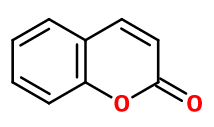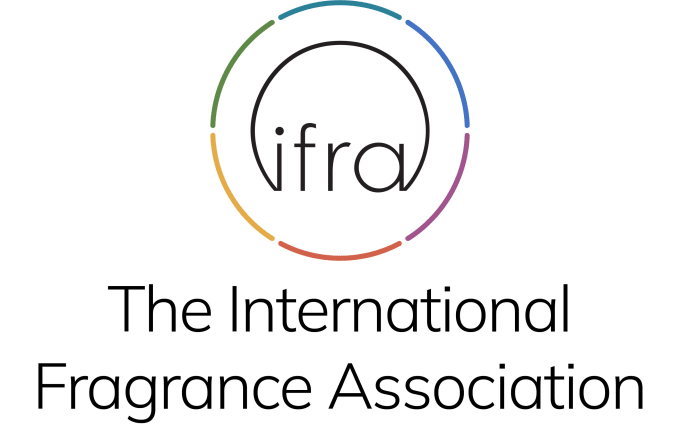
Photo credits: ScenTree SAS
Coumarin
Chromen-2-one ; Benzo-alpha-pyrone ; 2-oxo-1,2-benzopyran ; 1-benzopyran-2-one ; 1,2-benzopyrone ; Chromenone ; Coumarinic acid lactone ; Coumarinic anhydride ; Cumarin ; Ortho-hydroxycinnamic acid delta-lactone ; Ortho-hydroxycinnamic acid lactone ; 3-(2-hydroxyphenyl)-2-propenoic lactone ; Tonka bean camphor

Photo credits: ScenTree SAS
| Company | Ingredient Name | ID | Comments | Naturality | Certifications | Purity | Latin name | Treated part | Geographical origin | MOQ |
|---|---|---|---|---|---|---|---|---|---|---|
|
|
Coumarine - 30 Gr | - |
Visit website
|
- | - | - | - | - | - | |
|
|
COUMARINE | M_0055060 |
Visit website
|
Naturel | - | - | - | - | - |
General Presentation
-
CAS N° : 91-64-5
-
EINECS number : 202-086-7
-
FEMA number : Donnée indisponible.
-
FLAVIS number : Donnée indisponible.
-
JECFA number : Donnée indisponible.
-
Appearance : White solid
-
Density : 1,247
-
Volatility : Heart
-
Price Range : €
Physico-chemical properties
-
Molecular formula : C9H6O2
-
Molecular Weight : 146,14 g/mol
-
Log P : Donnée indisponible.
-
Fusion Point : 71°C
-
Boiling Point : 297°C
-
Detection Threshold : 34 et 50 ppb (0,000005%)
-
Optical rotation : Donnée indisponible
-
Vapor pressure : Donnée indisponible
-
Refractive Index @20°C : Donnée indisponible
-
Acid Value : Donnée indisponible.
-
Flash Point : 162°C
Uses
Uses in perfumery :
Coumarin is a key element in the composition of oriental and fougere notes. Allows to bring a gourmand and vanillic facet to all types of accords. Good fixator.
Year of discovery :
Discovered in 1868. English chemist William Henry Perkin synthesized Coumarin for the first time, twenty years after its natural discovery by German chemist Friedrich Whöler. The industrial synthesis of Coumarin only started in 1877.
Natural availability :
Coumarin is present in several plant extracts, including Tonka Bean Absolute, Hay Absolute or sweet woodruff, of which it is the major constituent and from which it can be extracted in its natural state.
Isomerism :
Coumarin does not have any isomer used in perfumery.
Synthesis precursor :
Coumarin allows the synthesis of several perfume compounds. In a diluted alkaline medium, it can be hydrolysed to be converted to cis-2-Hydroxycinnamic acid. In a concentrated alkaline medium, at a hot temperature and in the presence of ethanol, the resulting product is trans-2-Hydroxycinnamic acid. Dihydrocoumarin is obtained by a catalytic hydrogenation of coumarin. Hydrogenation at a high temperature (392-482 °F) allows to synthesize Octahydrocoumarin.
Synthesis route :
Coumarin is synthesized from Salicylaldehyde by a Perkin synthesis. This reaction consists in reacting Salicylaldehyde with acetic anhydride in the presence of sodium acetate at a high temperature. Acetic acid also results from this reaction and is the most used method.
Regulations & IFRA
Allergens :
This ingredient does not contain any allergen.
IFRA 51th :
This ingredient is restricted by the 51th amendment
- Quantitative limit on the use :
-
Cat.1 Cat.2 Cat.3 Cat.4 Cat.5A B C DCat.6 0,089 % 0,08 % 0,089 % 1,5 % 0,38 % 0,11 % 0,16 % 0,035 %0,0024 % Cat.5A B C DCat.6 0,38 % 0,11 % 0,16 % 0,035 %0,0024 % Cat.7A BCat.8 Cat.9 Cat.10A BCat.11A BCat.12 0,18 % 0,18 %0,035 % 0,52 % 0,52 % 1,6 %0,035 % 0,035 %33 % Cat.10A BCat.11A BCat.12 0,52 % 1,6 %0,035 % 0,035 %33 %
Annexe I :
Some regulated synthetic ingredients are found in nature and in certain proportions in natural ingredients. This presence in nature has to be taken into account when calculating limits of use recommended by the IFRA. In case you do not know these concentrations, you can use the ones estimated by the IFRA. Here they are :
| List of regulated compounds contained in this ingredient | |||
|---|---|---|---|
| Ingredient Name | Botanical Name | CAS N° | Estimated Concentration |
| Cinnamon bark oil, Laos | Cinnamomum loureiroi Nees | 97659-68-2 | 3 |
| Cinnamon bark CO2 extract | Cinnamomum verum J. Presl syn. C. zeylanicum Blume | 8015-91-6 | 0,1 |
| Cinnamon bark oil | Cinnamomum zeylanicum Blume | 8015-91-6 | 0,6 |
| Cinnamon leaf oil | Cinnamomum zeylanicum Blume | 8015-91-6 | 0,3 |
| Cassia bark oil | Cinnamomum cassia [L.] J. Presl syn. C. aromaticum Nees | 8007-80-5 | 2,85 |
| Cassia bark oleoresin | Cinnamomum cassia [L.] J. Presl syn. C. aromaticum Nees | 8007-80-5 | 3,27 |
| Cassia oil | Cinnamomum cassia [L.] J. Presl syn. C. aromaticum Nees | 8007-80-5 | 2 |
| Tonka Bean absolute | Dipteryx odorata | 8024-04-2 | 56,77 |
| Flouve absolute | Anthoxanthum odorantum L. | 68916-09-6 | 2 |
| Hay absolute | Lolium perenne. L | 8031-00-3 | 8 |
| Lavender absolute | Lavandula angustifolia angustifolia | 8000-28-0 | 5,98 |
| Lavandin abrialis oil | Lavandula x intermedia abrialis | 8022-15-9 | 0,2 |
| Lavandin absolute | Lavandula officinalis x Lavandula latifolia | 8022-15-9 | 1,77 |
| Lavandin concrete | Lavandula officinalis x Lavandula latifolia | 8022-15-9 | 1,21 |
| Deertongue leaf absolute | Liatris odoratissima (Walt.) Willd. | 68606-82-6 | 25 |
| Narcissus poeticus absolute | Narcissus poeticus L. | 68917-12-4 | 1,2 |
| Osmanthus absolute | Osmanthus fragrans Lour. | 68917-05-5 | 0,02 |
| Osmanthus concrete | Osmanthus fragrans Lour. | 68917-05-5 | 0,02 |
| Lavandin grosso absolute | Lavandula angustifolia Mill. x Lavandula latifolia Medik. | 617-009-6 | 4,09 |
| Lavandin super oil | Lavendula super | 93685-88-2 | 0,1 |
| Lavender oil dentata | Lavandula dentata | 93165-50-5 | 0,35 |


